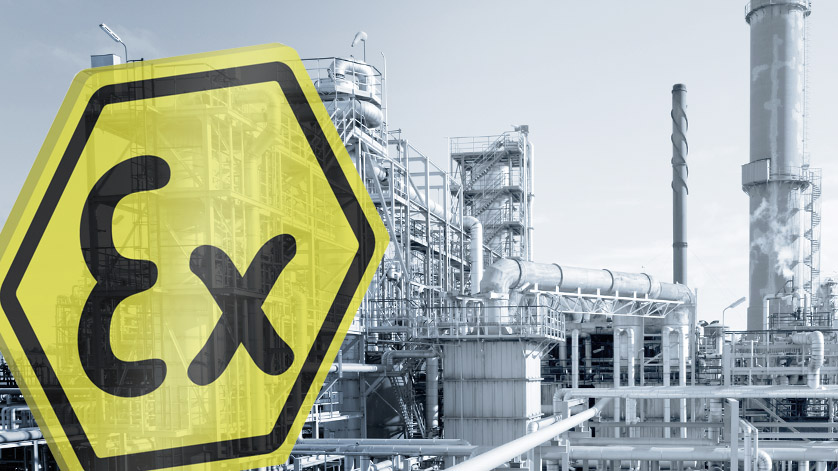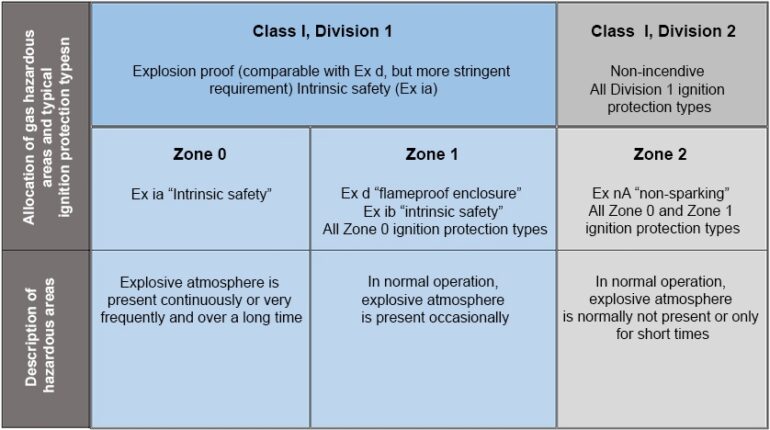- Empty cart.
- Continue Shopping
Ex Protection – Differences between the Zone and Division model


“The product is suitable for usage in both Zone 1 and Class 1, Div 1.” This statement is frequently encountered in product descriptions intended for hazardous environments. However, it is essential to understand the distinction between Zone 1 and Class 1, Div 1. Let’s compare the Zone model with the Division model.
From an international perspective, equipment’s explosion protection, such as pressure sensors and other devices, is described in the IEC 60079 series of standards. These standards serve as the foundation for the EU 2014/34/EU (ATEX) directive and cover various aspects, including the ignition protection types for electrical equipment and the evaluation or classification of hazardous areas into different zones within a plant.
On the other hand, specific national regulations might deviate from these international standards. For instance, electrical systems’ construction and operation in North America are governed by the National Electrical Code (NEC) in the USA and the Canadian Electrical Code (CEC) in Canada. These regulations may differ, including how hazardous areas are determined and classified. The following table provides a simplified comparison of the various designations used for classifying gas hazardous areas:”

In the meantime, the NEC and CEC have been expanded with regard to the international series of standards, so that both now also support the Zone model for the classification of hazardous areas and the CEC even requires this for new installations.